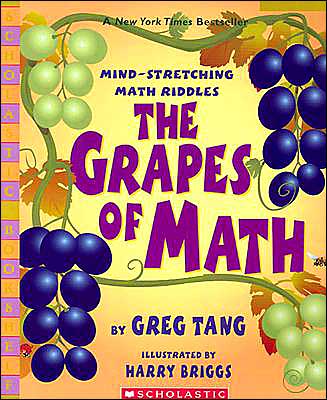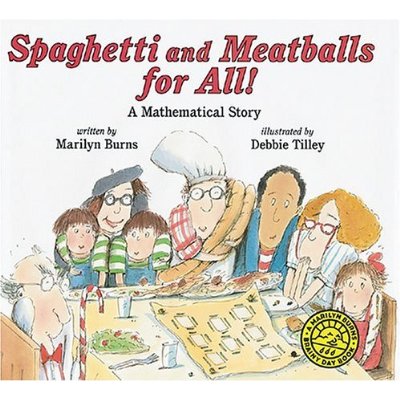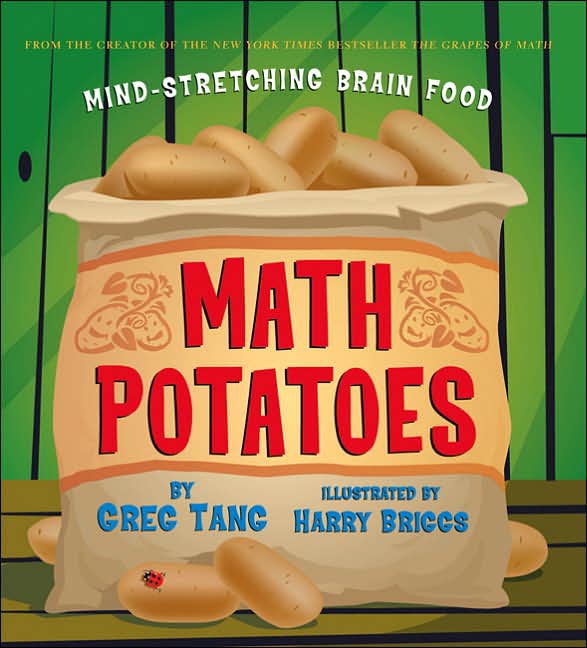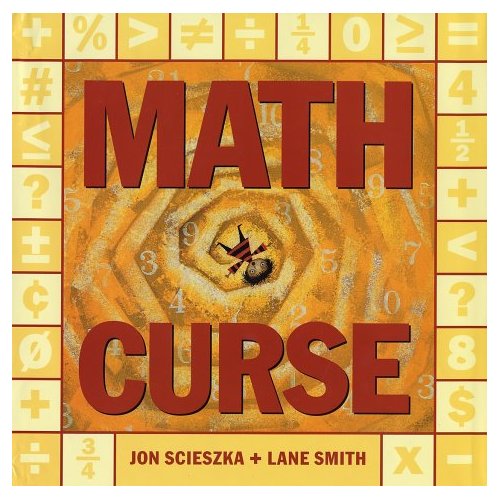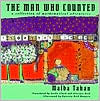Introduction: I chose resources for linear measurement, weight, volume, and temperature. The materials are geared towards 2nd grade and I have focused on VA SOLs 2.11 and 2.14.
Text Annotations:
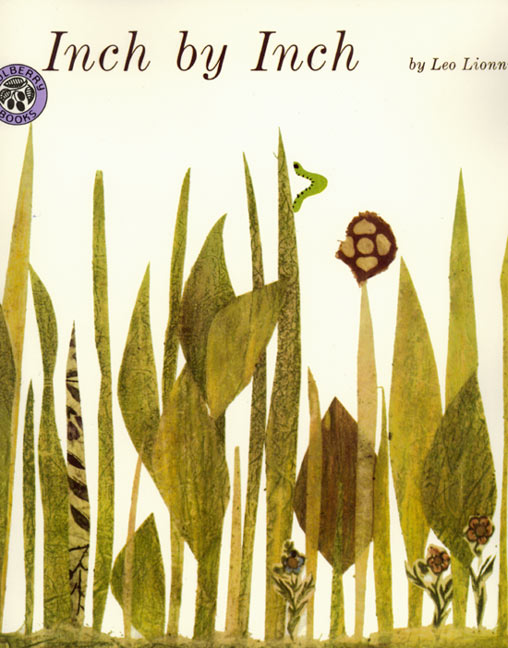 Inch by Inch by Leo Lionni
Inch by Inch by Leo Lionni
Inch by Inch, written and illustrated by Leo Lionni, tells the story of an inchworm who measures the physical characteristics of different types of birds. Although no numbers are used in the text, Inch by Inch introduces measurement by inches. Furthermore, the book helps students understand that concrete objects can be measured. The book closes when the inchworm is asked to measure the size of the nightingale’s song. Knowing that a song cannot be measured and knowing that he could become the nightingale’s next meal, the inchworm cleverly devices a plan tricking the nightingale. While the nightingale thinks its’ song is being measured, the inchworm “inched out of sight.”
 Inchworm and a Half by Elinor J. Pinczes
Inchworm and a Half by Elinor J. Pinczes
Written by Elinor J. Pinczes and illustrated by Randall Enos, Inchworm and a Half can be used in measurement lessons for younger elementary students. The plot of the book is very similar to the plot of Inch by Inch by Leo Lionni. The inchworm in Pinczes’ book measures objects in a garden by looping its body and each loop equals one inch. However, the premise of Pinczes’ book differs from Lionni’s because fractions are introduced as well. When the inchworm in Pinczes’ book measures a bean using the looping method and comes up short, a worm half the inchworm’s size measures the remainder of the bean. The following objects get smaller and as a result, smaller worms are used to measure the difference.
 Actual Size by Steve Jenkins
Actual Size by Steve Jenkins
Actual Size, written by Steve Jenkins, presents measurement in a fun way. Readers are presented with a variety of animals and insects or a specific part of an animal’s or insect’s body to scale. For example, readers can compare the size of their hand to a gorilla’s hand. Jenkins further emphasizes the largeness of the gorilla’s hand by depicting the smallness of a pygmy lemur’s palm. All illustrations in Actual Size were completed in torn paper collages and could be used to enhance an art lesson. Furthermore, Jenkins presents some physical characteristics of some of the animals in his book, and Actual Size could be used in science lessons.
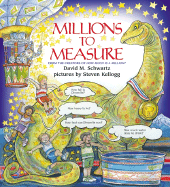 Millions to Measure by David M. Swartz
Millions to Measure by David M. Swartz
Millions to Measure, written by David M. Swartz and illustrated by Steven Kellogg, is the story of a wizard named Marvelosissimo. Marvelosissimo measures and calculates the length, mass, and volume of various objects. However, the wizard finds that the English Standard of measurement is complicated, and he develops a new system of measurement, the metric system. Readers are introduced to grams, liters, and meters and are given the opportunity to compare the two systems of measurement.
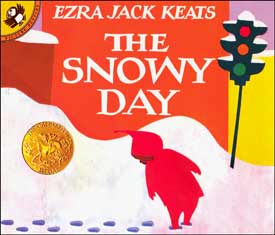 The Snowy Day by Ezra Jack Keats
The Snowy Day by Ezra Jack Keats
I could not find a book other than elementary science textbooks that measured and explored temperature in degrees Celsius or Fahrenheit. However, I think The Snowy Day, written and illustrated by Ezra Jack Keats, would be a good introduction to the topic. The main character of the book wakes up to snow and Keats writes about the boy’s adventures during the day. The plot consists of the child making snow angels, knocking snow off of a tree, examining his footprints in the snow, and trying to save a snowball for the next day. The Snowy Day could be used to introduce a lesson on weather patterns or the unique illustrations could enhance an art lesson on collages or watercolors.
Web Annotations:
1.) Math Cats Convert Numbers– this site provides students and teachers with a good resource for measurement conversion. Viewers are instructed to enter any number in the box and the website will convert the number to various measurements, in U.S. Customary and Metric formats. The site allows viewers calculate length, mass/weight, and liquid volume. For example, users can determine how many ounces are in a pound and how many quarts are in a gallon. The viewer decides what numbers to enter for conversion and this feature promotes a thorough exploration of measurement. Furthermore, the site is easy to use and the focus of the page is directed towards the activity and not towards advertisements.
2.) Temperature Game– this game, provided by NASA’s website, helps students learn temperature in degrees Celsius and Fahrenheit. The object of the activity is to determine the correct temperature of various objects. Users place the objects’ icons next to the thermometer that is labeled with several different temperatures. For example, students must place an icon of a pot of boiling water next to the correct temperature on the thermometer. They have to determine the boiling point of water. Students have the opportunity to compare answers in degrees Celsius and Fahrenheit. Additionally, older students can play the game finding the temperature of the objects in degrees Kelvin. Although the game does not provide answers, users are given immediate feedback based on responses and have the opportunity to correct mistakes. Lastly, the site provides an link that defines terms related to temperature and gives a brief historical lesson on the development of measuring temperature.
3.) Sleuths on the Loose-found on the PBS Kids website, Sleuths on the Loose is an activity that develops linear measurement skills. Students are directed to calculate the height (in inches) of several baby monsters and the monsters’ mothers. The site provides the length of the baby monsters’ foot and tells viewers how many of the monsters’ feet equal its height. Students have an opportunity to develop multiplication skills because they have to find the correct answer by multiplying the length of the foot by the number of feet that equal the monster’s height. The same process is used to determine the height of the mama monsters.
4.) Learning Math– this website has ten sessions that allow students to explore measurement in depth. Although advanced mathematical topics such as circumference and trigonometry are covered, topics are available for elementary students. Session Three explains the metric system in two parts. Learning objectives are stated for each topic, and each session has an option for students to go back and review prior learning. Numerous videos discussing measurement, area, and volume are available for purchase as well.
5.) Animal Weigh In– this activity has students challenge their knowledge with the Metric System. Because the game is found on the BBC Education website, students may not be familiar with stones as a unit of measurement. However, students are tested on grams, kilograms, ounces, and pounds. For example, viewers place ounce weights on a scale. The ounces must equal the weight of another object located on the left side of the scale. However, the object’s weight is labeled in pounds, so students must determine correct conversions and equivalents. Students have the opportunity to correct their answers or move on to another measurement activity. Animal Weigh In has three levels that challenge younger and older students. Lastly, the game is animated and has sound which appeals to students.
Additional Resources:
1.) All Aboard the Campaign Trail– All Aboard the Campaign Trail is a cross-curricular activity that combines math, social studies, and civics into a week-long lesson. The lesson plan, found at the PBS Kids website, is comprehensive and states learning objectives, materials, the learning sequence, possible assessments, and extensions. The activity is used in conjunction with another lesson plan published by PBS Kids known as Donkeys and Elephants and Voters, Oh My! The class is arranged into two parties and students are asked to raise support for their political party in the anticipatory set of All Aboard the Campaign Trail. After familiarizing students with the campaign train, the groups plan a campaign trail using atlases and online maps as references. The students must determine the length of their campaign trail using map keys and scales. Using MapQuest as a reference, the students are asked to use the calculated mileage of their trails to determine the arrival time of their “trains.” Additionally, the groups can use the World Time Server website to see if their trail crosses time zones. Students are asked to strategically develop campaign trails using electors in the Electoral College to their party’s advantage.
2.) Curious George How Tall? I liked this online game provided by the PBS Kids website because it is a good resource to use with very young students. How Tall introduces young children to measurement by having them compare two objects of varying sizes. Viewers are asked to measure a larger object with smaller objects. For example, students are asked how many tennis balls, if stacked up in a vertical row, would equal the height of a tennis racket. No numbers are used in the activity, but How Tall helps students compare two objects and estimate the height of one of the objects. The game is interactive and The Man in the Yellow Hat prompts students throughout the game. The answer, correct or incorrect, is always verified by using the smaller object to measure the larger object, so students physically see the measurement. Students are shown why their answer is correct or incorrect and they have the opportunity to learn from errors. The game would be appealing to students because most children are familiar with Curious George and many teachers read Margret and Hans Augusto Reys’ books in the classroom. The game is free and can be used without creating an account with the website. Lastly, the PBS Kids website offers many other online games in various subjects and topics.
3.) Planet Mass Comparison-through NASA’s website students are able to compare the mass of the planets. Students determine what two planets they want to weigh, and the website places the planets on a scale. The website lists the mass of each planet in kilograms, so students can make numerical comparisons. The planets are shown in varying sizes depending upon their actual size. Viewers can add multiple planets to one side of the scale to see how many planets equal another planet. For example, students can see that the mass of approximately seven Mars roughly equals the mass of one Venus. No sound, but the activity is animated. This website would be good for a lesson on the Metric System and mass/weight. The game could also be used in a science lesson about the Solar System.
4.) Planet Size Comparison– another activity offered through NASA. This online activity is very similar to the Planet Mass Comparison. Students can compare the sizes of the planets and view the disparity in sizes. The website provides viewers with the diameters in kilometers of each planet and the size ratio between two planets. This activity does not have audio but is animated. This is another good activity for measuring size and lessons on the Solar System. Planet Size Comparisons could also be used in geometry lessons on circumference and diameters for older students.

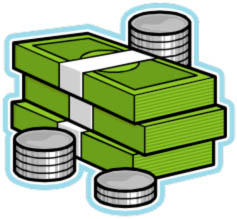





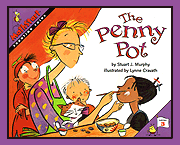
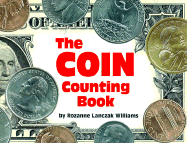

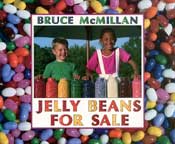
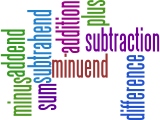
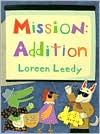

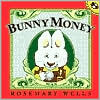

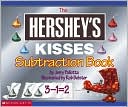


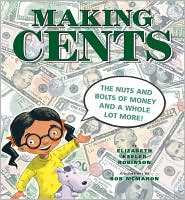 Making Cents
Making Cents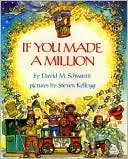 If You Made a Million
If You Made a Million The Coin Counting Book
The Coin Counting Book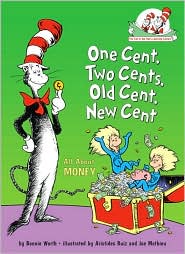 One Cent, Two Cents, Old Cent, New Cent: All About Money
One Cent, Two Cents, Old Cent, New Cent: All About Money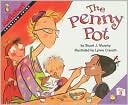
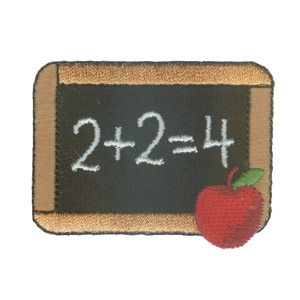
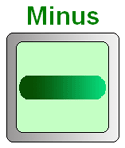


 10 Little Rubber Ducks
10 Little Rubber Ducks My Little Sister Ate One Hare
My Little Sister Ate One Hare

